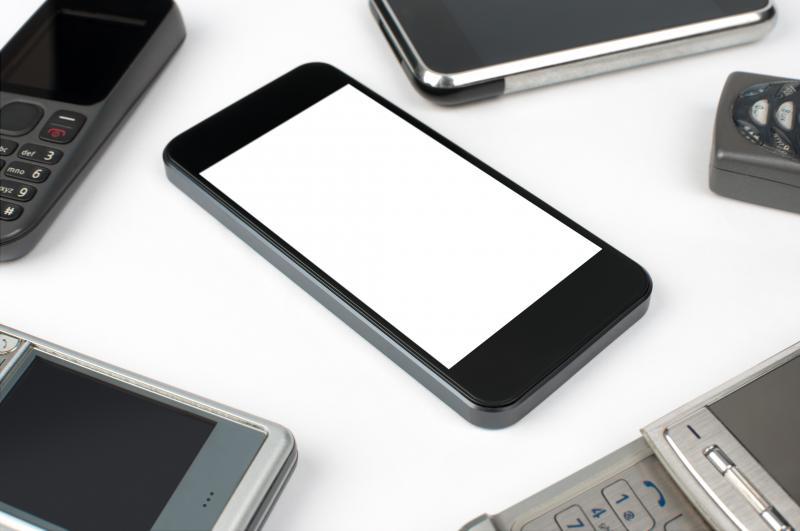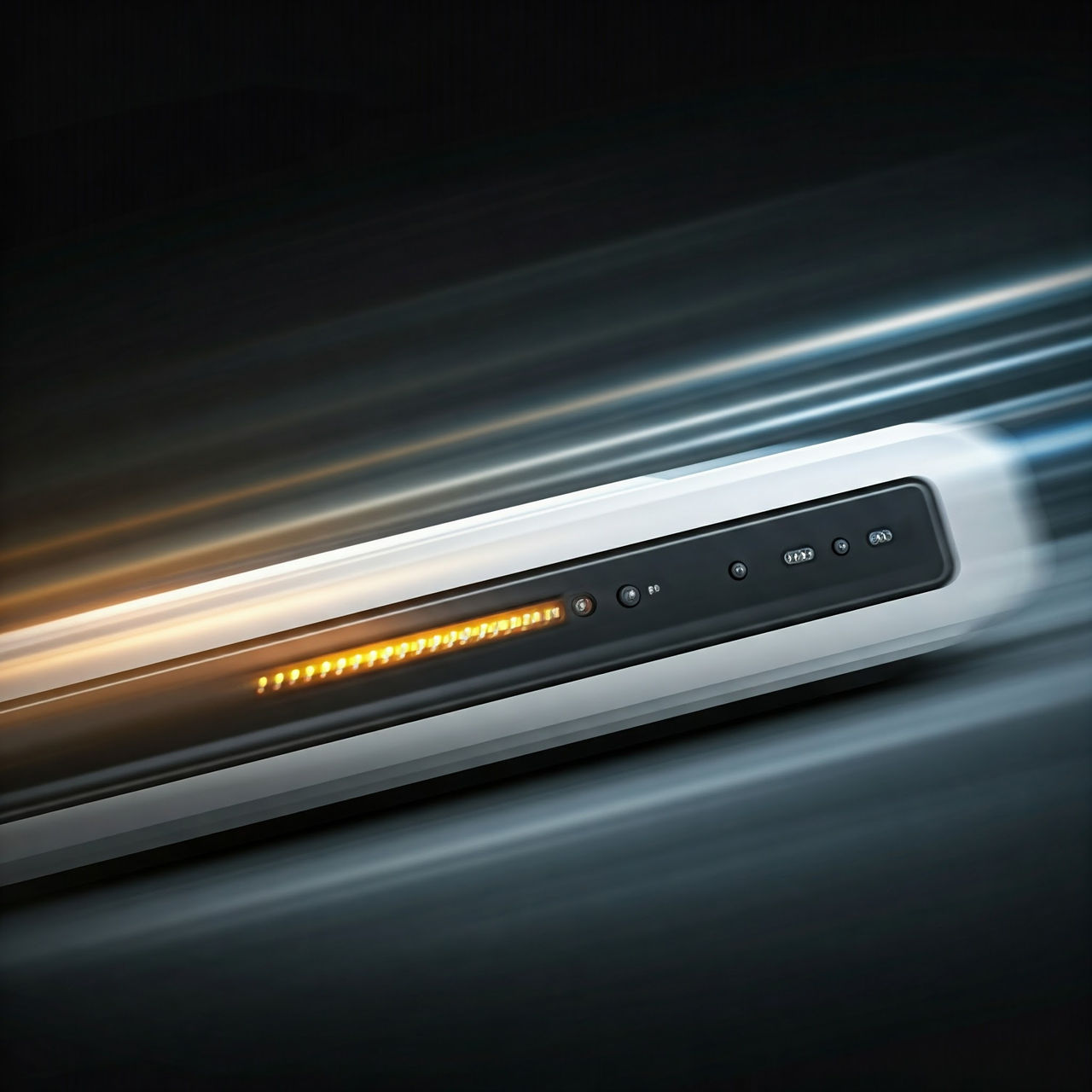
The lowdown on eSIM Compatible Phones
6 June 2024
If there’s one constant in the world of phones, it’s change!
Whether it’s improvements to camera quality, increased functionality of apps or slimness of design, the rivalry between Apple’s iPhones, Google’s Pixel and Samsung’s phones means that there’ll always be something new on the market.
Changes to background tech, such as the SIM that powers your phone, are less obvious. There aren’t the fancy launches or the social media and mainstream advertising that come with, say, the recent launch of the iPhone 15.
So, we’re here to update you on a revolution in SIMs - eSIM compatible phones!
We’ll fill you in on what an eSIM is and what its advantages are over the traditional SIM cards. Then, we’ll give you a comprehensive list of all the eSIM compatible phones.
What is an eSIM?
First, a little reminder of what a SIM is.
SIM stands for Subscriber Identity Module (remember that for your next trivia night party), which basically means that it’s about telling a phone that it’s yours. It puts your phone in touch with your identity, by telling it details like your phone number and your chosen network provider.
(SIM also stands for ‘Sorry I’m Late’ in a message, ‘Social Influencer Marketing’ and means ‘yes’ in Portuguese, but we’re not talking about those types of SIM).
You likely know about SIM cards. They’re the little microchip card that you put into a new phone in order to make it your own. You open up the little drawer in your phone using a groovy paper-clip style tool and carefully place it in, making sure the cut corner aligns so the phone can recognise and read it.
FUN FACT: The earliest SIM cards were the size of a credit card! SIMs have gradually shrunk in size as well as increasing in data capacity.
OK, now you’ve had a refresher on SIMs overall, let’s move onto eSIMs.
An eSIM is a non-physical, digital version of a SIM.
When you use an eSIM, there’s no longer any need to get your SIM card mailed out to you and no need to open that tiny drawer in your phone.
What does the ‘e’ stand for?
You might assume that the ‘e’ of eSIM stands for ‘electronic’?
If so, you'd be wrong (but far from alone).
You can impress your friends with your newfound knowledge that the ‘e’ stands for ‘embedded’. That’s because the eSIM is physically soldered into your phone when it’s manufactured.
If regular SIM cards were physically attached to a phone, you’d never be able to switch a phone from one user to another. However, the beauty of eSIMs is that this tiny piece of electronics can receive details of your phone number and network via digital download.
And then, if you upgrade your phone, the details can be removed from your old handset and added to your new device.
What are the benefits of an eSIM?
Same cost: There is no extra cost for using eSIM over a SIM card.
Convenience: The main benefit is convenience. There's no longer a need to go into a store or wait for the post. An eSIM can be downloaded and activated (on your eSIM compatible phone) in minutes, often using a simple QR code. eSIMS can be activated anytime from anywhere.
No physical handling: For those of us who are perhaps a little clumsy, another benefit of eSIMs is that they can’t be lost. Anyone who’s dropped a little eSIM card will know just how small they are. As will anyone who’s perhaps damaged a phone case while removing it to access the little drawer or then struggled to fit the SIM into the little drawer in the right orientation.
Less waste: SIM cards are pretty small but switching to an eSIM is one more way to minimise physical waste. SIMs contain small amounts of rare and valuable minerals, including gold and, due to them using a variety of materials, they’re impactful to manufacture and hard to recycle.
Travel ease: When travelling overseas, you can keep your Australian number and use a local SIM card all in the one phone.
The potential to have more than one number: Would having more that one phone number within the same device be helpful? Maybe when travelling or for your work or side-hustle?
Some devices will allow you to toggle between anywhere from 2 to 20 different eSIMs, each with their own number! Others that have ‘dual SIM, dual standby’ (DSDS) allow you to use both a physical SIM and an eSIM on the same device. You can then control which SIM you want to use for incoming or outgoing calls and messages, as well as data.
Keep up with the times: It won’t be long until all phones (apart from those who like the equivalent of using a flip-phone with snake as the only available game) are eSIM compatible phones.
You can think of eSIMs as streaming your favourite show compared with popping out to the video store. Like finding tunes via Spotify over vinyl. Similar to searching the interwebs instead of flicking the pages of an encyclopaedia.
The future of SIM is ‘e’.
How does an eSIM work?
Once you’ve set up your eSIM, your amaysim phone will function just as if there was a physical SIM card in there. There’s no actual advantage in terms of reception, download speeds or call quality as these things are not affected by the type of SIM.
amaysim’s network is fully eSIM compatible so It doesn’t matter whether you’re on the new 5G mobile network or hooked up to wi-fi, your phone will function just the same. eSIMs behave exactly the same way as a physical SIM.
Do I need to change my plan?
No! You can stay on the exact same plan regardless of whether you have a physical SIM or an eSIM.
However, if one change is prompting another, you’re welcome to check out our amazing amaysim plans at any time.
How new are eSIMs?
You’d be forgiven if you’ve only heard about eSIMs recently but they've actually been available in Australia since 2018. Not all providers offer eSIM service yet and we’re pleased to say that amaysim is one that does.
eSIM is only available on newer phones so there’s a natural delay in how may people are accessing this new technology. Take-up of eSIM use will increase over time as more people upgrade their phones.
What about wearables and smart watches?
Please pardon the pun but … watch this space!
eSIM compatible devices, such as wearables and watches, are coming so please check in on our social channels to find out first when this is possible.
How do I check if my device is eSIM compatible?
If you want to check the fine details (such as how many eSIMs you can have active), please look at your device manufacturer’s website.
The easiest way to check the answer to your question: ‘Is my phone eSIM compatible?’, both for your existing device and if you’re thinking of switching or upgrading, is to see our comprehensive list immediately below.
Which phones are eSIM compatible?
Quick compatibility check
Simply dial *#06# to quickly see if your phone supports eSIM. If it does, a 32-digit EID number will display on your screen.
Apple
Listing which eSIM compatible iPhones are available in Australia is not as straightforward as stating the generation number. Within each generation of iPhone are several models (such as Pro / Max / Mini) and Apple varies the features available on each.
So, let’s list the eSIM compatible iPhones in fine detail:
- iPhone XR
- iPhone XS
- iPhone 11
- iPhone 11 Pro
- iPhone 11 ProMax
- iPhone SE 2
- iPhone 12
- iPhone 12 Mini
- iPhone 12 Pro
- iPhone Pro Max
- iPhone 13
- iPhone 13 Mini
- iPhone 13 Pro
- iPhone 13 Pro Max
- iPhone SE 3
- iPhone 14
- iPhone 14 Plus
- iPhone 14 Pro Max
- iPhone 15
- iPhone 15 Plus
- iPhone 15 Pro
- iPhone 15 Pro Max
- iPhone 16
- iPhone 16 Plus
- iPhone 16 Pro
- iPhone 16 Pro Max
Apple iPads
Newer iPads that have connectivity also have eSIM compatibility:
- iPad Air
- iPad
- iPad Mini
- iPad Pro 11 inch
- iPad Pro 12.9 inch
- iPad 10th generation
Samsung Galaxy
What are the eSIM compatible Samsung phones? Here’s a full list:
- Samsung Galaxy A54 5G
- Samsung Galaxy S20
- Samsung Galaxy S20+
- Samsung Galaxy S20+ 5g
- Samsung Galaxy S20 Ultra
- Samsung Galaxy S20 Ultra 5G
- Samsung Galaxy S21
- Samsung Galaxy S21+ 5G
- Samsung Galaxy S21+ Ultra 5G
- Samsung Galaxy S22
- Samsung Galaxy S22+
- Samsung Galaxy S22 Ultra
- Samsung Galaxy S23
- Samsung Galaxy S23+
- Samsung Galaxy S23 Ultra
- Samsung Galaxy S23 FE
- Samsung Galaxy S24
- Samsung Galaxy S24+
- Samsung Galaxy S24 Ultra
- Samsung Galaxy Note 20
- Samsung Galaxy Note 20 Ultra 5G
- Samsung Galaxy Fold
- Samsung Galaxy Z Fold2 5G
- Samsung Galaxy Z Fold3 5G
- Samsung Galaxy Z Fold4
- Samsung Galaxy Z Fold5 5G
- Samsung Galaxy Z Flip
- Samsung Galaxy Z Flip3 5G
- Samsung Galaxy Z Flip4
- Samsung Galaxy Z Flip5 5G
Google Pixel
Google Pixel eSIM compatible phones were available overseas earlier than in Australia. Australian-bought Google Pixels have been compatible with eSIMs since the Google PIxel 4.
- Google Pixel 4
- Google Pixel 4a
- Google Pixel 4 XL
- Google Pixel 5
- Google Pixel 5a
- Google Pixel 6
- Google Pixel 6a
- Google Pixel 6 Pro
- Google Pixel 7
- Google Pixel 7 Pro
- Google Pixel Fold
- Google Pixel 8
- Google Pixel 8a
- Google Pixel 8 Pro
- Google Pixel 9
- Google Pixel 9 Pro XL
- Google Pixel 9 Pro Fold
Others
Other phones that can be used with an eSIM include:
- Huawei P40
- Huawei P40 Pro
- Huawei Mate 40 Pro
- Oppo Find X3 Pro
- Find N2 Flip
- Oppo Reno 5A
- Oppo Reno 6 Pro 5G
- Oppo Find X5
- Oppo Find X5 Pro
- Oppo A55s 5G
- Sony Xperia 10 III Lite
- Sony Xperia 10 IV
- Xperia 10V
- Xperia 1 IV
- Sony Xperia 5 IV
- Sony Xperia 1 V
- Sony Xperia Ace III
- Motorola Razr 2019
- Motorola Razr 5G
- Motorola Razr 40
- Motorola Razr 40 Ultra
- Motorola Razr+
- Motorola Edge+
- Motorola Edge 40 Pro
- Motorola G52J 5G
- Motorola G52J 5G Ⅱ
- Motorola G53J 5G
The future of eSIM technology
As more and more people upgrade their devices, eSIMs will become the norm and physical SIM cards' main place in life will be in a museum of technology.
In fact, some sources forecast that, by 2025 on a worldwide basis, eSIMS will be present in over 3.4 billion devices (that’s up from 1.2 billion in 2021)!
So, you’re doing the right thing by familiarising yourself with this technology now. You’ll be ready to consider and embrace the eSIM either now (if your current device is eSIM compatible) or when you next upgrade your phone.
Whenever that is, we’re here to help:
- See our easy guide to activating an eSIM for your amaysim phone plan.
- Keep up to date with eSIM developments at amaysim.


